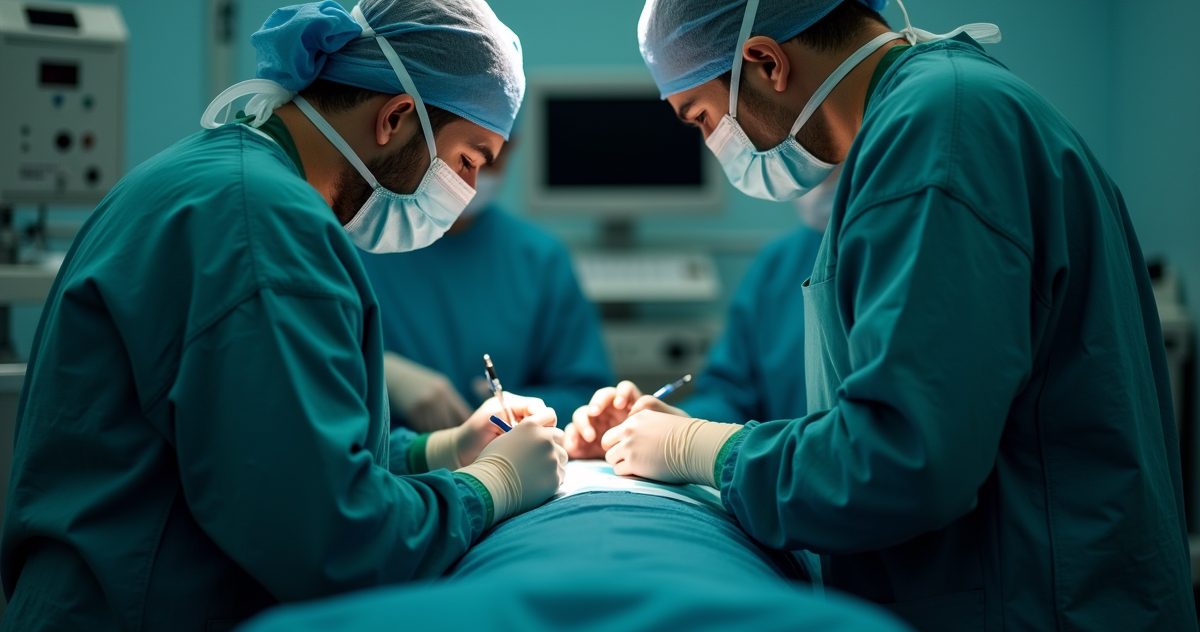Liposuction is a popular cosmetic procedure aimed at removing excess fat from specific areas of the body. However, many people wonder, “Can liposuction kill me?” or “Does liposuction kill?” Understanding the risks and safety measures associated with liposuction is crucial for anyone considering this procedure.
Can Liposuction Be Deadly?
Liposuction, like any surgical procedure, carries certain risks. While it is generally safe when performed by a qualified professional, there are instances where complications can arise, leading to severe outcomes.
Mortality Rates Associated with Liposuction
The mortality rate for liposuction is relatively low, but it is not zero. Studies suggest that the risk of death from liposuction is approximately 1 in 5,000 procedures. This statistic highlights the importance of understanding the potential risks involved.
Factors That Increase the Risk of Fatal Complications
Several factors can increase the risk of fatal complications during liposuction. These include the patient’s overall health, the amount of fat being removed, and the experience of the surgeon. Patients with pre-existing health conditions or those undergoing extensive procedures may face higher risks.
Book A Consultation With Dr Tarek Bayazid
Top-rated Plastic Surgeon For Liposuction in Dubai
Installment Plan Available
- Pre-existing health conditions
- Extensive fat removal
- Inexperienced surgeon
What is Liposuction and How Does It Work?
Liposuction is a surgical procedure designed to remove fat deposits from specific areas of the body. It involves the use of a suction technique to extract fat, helping to contour and reshape the body.
Types of Liposuction Procedures
There are various types of liposuction procedures, each with its own techniques and benefits. These include tumescent liposuction, ultrasound-assisted liposuction, and laser-assisted liposuction. Each method has its own set of risks and advantages.
Areas of the Body Commonly Treated with Liposuction
Liposuction is commonly used to treat areas such as the abdomen, thighs, buttocks, arms, and neck. These areas are often resistant to diet and exercise, making liposuction an attractive option for many individuals.
- Abdomen
- Thighs
- Buttocks
- Arms
- Neck
Potential Complications of Liposuction
While liposuction is generally safe, it is not without potential complications. Understanding these risks can help patients make informed decisions about their health.
Infection and Sepsis
Infection is a possible complication of any surgical procedure, including liposuction. If not properly managed, an infection can lead to sepsis, a life-threatening condition that requires immediate medical attention.
Fat Embolism
A fat embolism occurs when fat enters the bloodstream and blocks a blood vessel. This is a rare but serious complication that can occur during liposuction, potentially leading to severe health issues.
Fluid Imbalance and Organ Damage
Liposuction can cause fluid imbalance, which may lead to organ damage if not properly managed. This is why monitoring fluid levels during and after the procedure is crucial.
- Infection risk
- Fat embolism potential
- Fluid imbalance concerns
Safety Measures to Minimize Liposuction Risks
To minimize the risks associated with liposuction, several safety measures should be taken. These include choosing a qualified surgeon and undergoing thorough pre-operative screening.
Choosing a Board-Certified Plastic Surgeon
Selecting a board-certified plastic surgeon is one of the most important steps in ensuring a safe liposuction procedure. Board certification indicates that the surgeon has undergone rigorous training and adheres to high standards of practice.
Pre-Operative Health Screening
A comprehensive pre-operative health screening can help identify any potential risks before the procedure. This includes evaluating the patient’s medical history and current health status.
Proper Anesthesia Management
Proper management of anesthesia is crucial for minimizing risks during liposuction. An experienced anesthesiologist should be present to monitor the patient’s vital signs throughout the procedure.
- Board-certified surgeon
- Comprehensive health screening
- Experienced anesthesiologist
Recovery and Aftercare Following Liposuction
Proper recovery and aftercare are essential for minimizing complications and ensuring the best possible outcome from liposuction.
Post-Operative Monitoring
Close monitoring after the procedure can help detect any signs of complications early. This includes regular check-ups with the surgeon and monitoring for any unusual symptoms.
Managing Pain and Swelling
Pain and swelling are common after liposuction. Proper management, including prescribed medications and compression garments, can help alleviate these symptoms.
Recognizing Signs of Complications
Being aware of the signs of complications, such as excessive swelling, pain, or fever, is crucial. Prompt medical attention can prevent minor issues from becoming serious problems.
- Regular check-ups
- Pain management strategies
- Awareness of complication signs
Alternatives to Traditional Liposuction
For those concerned about the risks of traditional liposuction, there are alternative fat removal techniques available.
Non-Invasive Fat Removal Techniques
Non-invasive techniques, such as CoolSculpting and laser lipolysis, offer fat reduction without surgery. These methods typically have fewer risks and shorter recovery times.
Comparing Risks and Benefits
When considering alternatives, it’s important to weigh the risks and benefits. Non-invasive methods may be safer, but they may not provide the same level of fat reduction as traditional liposuction.
- CoolSculpting
- Laser lipolysis
- Risk-benefit analysis
Long-Term Effects of Liposuction
Understanding the long-term effects of liposuction can help patients maintain their results and overall health.
Maintaining Results
Maintaining a healthy lifestyle, including a balanced diet and regular exercise, is crucial for preserving the results of liposuction. Without these efforts, fat may return to untreated areas.
Potential Health Impacts
While liposuction can improve body contour, it is not a solution for weight loss or obesity. Patients should be aware of the potential health impacts and set realistic expectations.
- Healthy lifestyle maintenance
- Realistic expectations
- Awareness of health impacts
Liposuction Statistics and Trends
Liposuction remains one of the most popular cosmetic procedures worldwide. Understanding the trends and demographics can provide insight into its widespread appeal.
Global Popularity of Liposuction
Liposuction is performed in many countries, with millions of procedures conducted annually. Its popularity continues to grow as techniques improve and become more accessible.
Demographics of Liposuction Patients
Liposuction is popular among both men and women, with patients ranging from young adults to older individuals. Understanding the demographics can help tailor the procedure to meet diverse needs.
- Global procedure statistics
- Diverse patient demographics
- Growing popularity trends
In conclusion, while liposuction is generally safe, it is not without risks. Understanding these risks and taking appropriate safety measures can help ensure a successful outcome. Always consult with a qualified professional, like Dr. Tarek, to discuss your options and make an informed decision.le.
Can Liposuction Kill You: Understanding the Risks and Safety Measures
Liposuction is a popular cosmetic procedure aimed at removing excess fat from specific areas of the body. However, many people wonder, “Can liposuction kill me?” or “Does liposuction kill?” Understanding the risks and safety measures associated with liposuction is crucial for anyone considering this procedure.
Can Liposuction Be Deadly?
Liposuction, like any surgical procedure, carries certain risks. While it is generally safe when performed by a qualified professional, there are instances where complications can arise, leading to severe outcomes.
Mortality Rates Associated with Liposuction
The mortality rate for liposuction is relatively low, but it is not zero. Studies suggest that the risk of death from liposuction is approximately 1 in 5,000 procedures. This statistic highlights the importance of understanding the potential risks involved.
Factors That Increase the Risk of Fatal Complications
Several factors can increase the risk of fatal complications during liposuction. These include the patient’s overall health, the amount of fat being removed, and the experience of the surgeon. Patients with pre-existing health conditions or those undergoing extensive procedures may face higher risks.
- Pre-existing health conditions
- Extensive fat removal
- Inexperienced surgeon
What is Liposuction and How Does It Work?
Liposuction is a surgical procedure designed to remove fat deposits from specific areas of the body. It involves the use of a suction technique to extract fat, helping to contour and reshape the body.
Types of Liposuction Procedures
There are various types of liposuction procedures, each with its own techniques and benefits. These include tumescent liposuction, ultrasound-assisted liposuction, and laser-assisted liposuction. Each method has its own set of risks and advantages.
Areas of the Body Commonly Treated with Liposuction
Liposuction is commonly used to treat areas such as the abdomen, thighs, buttocks, arms, and neck. These areas are often resistant to diet and exercise, making liposuction an attractive option for many individuals.
- Abdomen
- Thighs
- Buttocks
- Arms
- Neck
Potential Complications of Liposuction
While liposuction is generally safe, it is not without potential complications. Understanding these risks can help patients make informed decisions about their health.
Infection and Sepsis
Infection is a possible complication of any surgical procedure, including liposuction. If not properly managed, an infection can lead to sepsis, a life-threatening condition that requires immediate medical attention.
Fat Embolism
A fat embolism occurs when fat enters the bloodstream and blocks a blood vessel. This is a rare but serious complication that can occur during liposuction, potentially leading to severe health issues.
Fluid Imbalance and Organ Damage
Liposuction can cause fluid imbalance, which may lead to organ damage if not properly managed. This is why monitoring fluid levels during and after the procedure is crucial.
- Infection risk
- Fat embolism potential
- Fluid imbalance concerns
Safety Measures to Minimize Liposuction Risks
To minimize the risks associated with liposuction, several safety measures should be taken. These include choosing a qualified surgeon and undergoing thorough pre-operative screening.
Choosing a Board-Certified Plastic Surgeon
Selecting a board-certified plastic surgeon is one of the most important steps in ensuring a safe liposuction procedure. Board certification indicates that the surgeon has undergone rigorous training and adheres to high standards of practice.
Pre-Operative Health Screening
A comprehensive pre-operative health screening can help identify any potential risks before the procedure. This includes evaluating the patient’s medical history and current health status.
Proper Anesthesia Management
Proper management of anesthesia is crucial for minimizing risks during liposuction. An experienced anesthesiologist should be present to monitor the patient’s vital signs throughout the procedure.
- Board-certified surgeon
- Comprehensive health screening
- Experienced anesthesiologist
Recovery and Aftercare Following Liposuction
Proper recovery and aftercare are essential for minimizing complications and ensuring the best possible outcome from liposuction.
Post-Operative Monitoring
Close monitoring after the procedure can help detect any signs of complications early. This includes regular check-ups with the surgeon and monitoring for any unusual symptoms.
Managing Pain and Swelling
Pain and swelling are common after liposuction. Proper management, including prescribed medications and compression garments, can help alleviate these symptoms.
Recognizing Signs of Complications
Being aware of the signs of complications, such as excessive swelling, pain, or fever, is crucial. Prompt medical attention can prevent minor issues from becoming serious problems.
- Regular check-ups
- Pain management strategies
- Awareness of complication signs
Alternatives to Traditional Liposuction
For those concerned about the risks of traditional liposuction, there are alternative fat removal techniques available.
Non-Invasive Fat Removal Techniques
Non-invasive techniques, such as CoolSculpting and laser lipolysis, offer fat reduction without surgery. These methods typically have fewer risks and shorter recovery times.
Comparing Risks and Benefits
When considering alternatives, it’s important to weigh the risks and benefits. Non-invasive methods may be safer, but they may not provide the same level of fat reduction as traditional liposuction.
- CoolSculpting
- Laser lipolysis
- Risk-benefit analysis
Long-Term Effects of Liposuction
Understanding the long-term effects of liposuction can help patients maintain their results and overall health.
Maintaining Results
Maintaining a healthy lifestyle, including a balanced diet and regular exercise, is crucial for preserving the results of liposuction. Without these efforts, fat may return to untreated areas.
Potential Health Impacts
While liposuction can improve body contour, it is not a solution for weight loss or obesity. Patients should be aware of the potential health impacts and set realistic expectations.
- Healthy lifestyle maintenance
- Realistic expectations
- Awareness of health impacts
Liposuction Statistics and Trends
Liposuction remains one of the most popular cosmetic procedures worldwide. Understanding the trends and demographics can provide insight into its widespread appeal.
Global Popularity of Liposuction
Liposuction is performed in many countries, with millions of procedures conducted annually. Its popularity continues to grow as techniques improve and become more accessible.
Demographics of Liposuction Patients
Liposuction is popular among both men and women, with patients ranging from young adults to older individuals. Understanding the demographics can help tailor the procedure to meet diverse needs.
- Global procedure statistics
- Diverse patient demographics
- Growing popularity trends
In conclusion, while liposuction is generally safe, it is not without risks. Understanding these risks and taking appropriate safety measures can help ensure a successful outcome. Always consult with a qualified professional, like Dr. Tarek, to discuss your options and make an informed decision.le.
FAQ’s
Can you die from liposuction surgery?
Yes, it is possible to die from liposuction surgery, although it is rare. The risk of death is low, but it underscores the importance of choosing a qualified surgeon and following all pre- and post-operative instructions.
What are the chances of dying from liposuction?
The chances of dying from liposuction are approximately 1 in 5,000. While this risk is low, it is important for patients to be aware of the potential dangers and take necessary precautions.
Is liposuction a high-risk surgery?
Liposuction is not considered a high-risk surgery when performed by a qualified professional. However, like any surgery, it carries certain risks that should be carefully considered.
How many people have died from liposuction?
Exact numbers vary, but studies estimate that the mortality rate for liposuction is about 1 in 5,000 procedures. This statistic highlights the importance of understanding the risks involved.
Can you die from liposuction surgery?
Yes, it is possible to die from liposuction surgery, although it is rare. The risk of death is low, but it underscores the importance of choosing a qualified surgeon and following all pre- and post-operative instructions.
What are the chances of dying from liposuction?
The chances of dying from liposuction are approximately 1 in 5,000. While this risk is low, it is important for patients to be aware of the potential dangers and take necessary precautions.
Is liposuction a high-risk surgery?
Liposuction is not considered a high-risk surgery when performed by a qualified professional. However, like any surgery, it carries certain risks that should be carefully considered.
How many people have died from liposuction?
Exact numbers vary, but studies estimate that the mortality rate for liposuction is about 1 in 5,000 procedures. This statistic highlights the importance of understanding the risks involved.











Related Posts